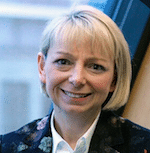By Ian Salmon, Markets Consultant – Finance, Accedian, and Angie Walker, Business Development – Capital Markets, Accedian
According to Albert Einstein “…is so that everything doesn’t happen at once”.
Consider yourself in the shoes of a timekeeper of athletic events. The stakes are high, consequently the choice of tools for the job imperative. Endurance or sprint? This question is at the forefront when it comes to providing the appropriate accuracy and granularity – seconds, tenths and hundredths of a second for a 100 metre race – hours, minutes and seconds to the marathon.
Regardless, even modern horology makes replay of the photo finish a necessary arbiter of placings on occasions. A definitive answer where all participants are on the same track in the same race. But what of time-trials you may ask? The same deadlock, determined now purely by time and not physical comparison? Well, therein lies the dilemma facing those responsible for oversight of one of the most technically advanced of our industries – the financial markets.
For those old enough to recall, MiFID 2 is without doubt the single most significant regulatory change to the market since Big Bang. One aspect of it, Clock Synchronisation, is prompted by two game-changers. These can be illustrated by our simple analogy, and are driving the requirements behind one of the most technical challenges the industry has faced since the Millennium. The first is market fragmentation. The regulator, desperately needing to recreate an accurate and complete sequence of events in order to prove what happened during a period of time in the past, used to be able to determine the sequence of orders and trades from a single Exchange’s ticker. Absolute time, and the granularity of the events were less necessary, when, like our photo finish, all trades were made on the same Exchange. Fragmentation, (and also the desire to surveil cross-asset strategies), makes a complete, granular and accurate timestamp on trade records the only way to achieve this picture of the relative sequence of activity across multiple venues.

Ian Salmon, Accedian
Add to this the second of our drivers – the ever increasing speed and performance of High Frequency trading, the sheer number of order updates creating a density of data-points that make the need for granularity ever more important. To relate this to our analogy, now imagine 50 runners in the 100 metre race – even on a single track the photo-finish would be indeterminable.
This new dimension has introduced some additional terms into the lexicon of the trade execution world. MiFID 2 mandates the need for industry wide clock synchronisation. Article 50’s related Technical Standard RTS 25 on Clock Synchronisation defines that timestamps must be ‘traceable’ to the Coordinated Universal Time (UTC). Market participants, be they Exchanges, other trading venues or members, must not only record their trading activities to the minutest of granularity but are required to both audit and demonstrate their timestamping system design on an annual basis.
Defining capture points and time source might not sound trivial but at least it’s deterministic. The technical methodology of synchronising all points of record to such a stringent level of time accuracy is a challenge in itself. Indeed, the vast majority of incumbent architectures display inconsistencies that make compliance impossible. Those turning to cutting edge instrumentation must question the unprecedented degree of resilience and traceability that are mandated in RTS 25. The HFT world, whom by their very nature are used to working comfortably in the milli/microsecond time domain, will without doubt find this a significant challenge. Likewise, those that traditionally inhabited this space at a technology provision level, and on the very basis of performance, scalability and throughput, have historically had little/no interest in the very things that MiFID 2 now mandates namely; resilience and traceability.

Angie Walker, Accedian
In order to ensure this completeness of data from a regulatory perspective, a wholly resilient solution is required. This means instrumentation of the infrastructure that must be lossless, with near infinite accuracy and with military level data authenticity/integrity. The infinitesimal accuracy requires a fresh and innovative approach to solving this challenge, as it is widely acknowledged that instrumenting a number of disparate application stacks and associated environments is simply not a viable solution. Amongst the various industry bodies founded in order to resolve these specific challenges, the current thinking which is fast emerging, is that this can only be resolved at the network level and using a single consistent time source and methodology. It is generally recognised that the first step to compliance is to identify and reference a reliable UTC time source. The consumption of this by the device at each audit point requires careful architecture without which firms may very quickly fall outside the maximum 100 microsecond accuracy tolerance. Persistence of this time stamp from the underlying PTP cards and capture points, particularly for those who are addressing the requirement over a WAN, is a challenge of technology over physics. The optimal solution is a purpose built timestamping architecture which is implemented on top of the existing infrastructural footprint. This gives both a non-intrusive and risk averse method of instrumenting the incumbent infrastructure, in a single auditable solution that combines UTC synchronisation, transaction data capture and PTP replication across a WAN, accurate to under 20 microseconds.
By using this cutting edge distributed timestamping architecture as a foundation, and by capturing the complete order/trade information at each of the audit points along its journey, it enables us to build a single holistic view of a transaction’s entire lifecycle. From each of the audit points all relevant fields relating to the transaction are stored in order to provide a complete record for future reference as/when requested by the regulator, timestamped to the relevant degree of accuracy. This low risk, non-intrusive approach to solving what is potentially the greatest of the technology challenges associated with the MiFID 2 regime is a “one-stop-shop” for compliance. Furthermore, it represents a low cost solution when compared with the alternative of re-instrumenting ones entire existing architecture(s) before attempt to synchronise to a single standard, against which one can collect the data for aggregation and visualisation.
As Einstein once said……. “Everything should be made as simple as possible, but not simpler.”
The authors are co-founders of Ignite G2M, a full-lifecycle business development outsource service focused on bringing new financial technology products and services to market.





